(October 31, 2024) -- Have you ever wondered where migrating birds are going, and where they stop along the way? Solving these mysteries will help us better understand the threats birds face, and how to better protect them. Therefore, collecting as much data as possible on migratory routes is crucial to helping us put together the larger puzzle of bird migration. That’s why every few months my colleagues and I visit seven very special radio towers across the Great Lakes region -- some in remote wilderness areas and others on city rooftops.
These Motus towers, or stations, help track migratory birds by picking up detections from any bird that has been given a special tag that carries a radio signal and flies within 11 miles of the tower. We download data files from each tower’s receiver and upload them to the Motus Wildlife Tracking Network’s online database. Then we sit back and see if any migratory birds have been detected.
Radio tags are so lightweight that they can be attached to small migratory species that researchers weren’t able to study previously, like birds as small as warblers and even insects like dragonflies! Motus technology has the potential to track individual birds and reveal what areas are used during migration, and where they might encounter difficulties. This can help fill in the blanks, helping researchers identify important areas to conserve and protect.
Once we have a confirmed detection, I use publicly available tools on the Motus website to determine where the bird was tagged, if it was detected after it departed the Great Lakes region, and if we can tell if it made it all the way to its wintering or breeding grounds. Confirming detections and seeing the full migratory path, or track, of a tagged bird depends on data collected from multiple radio towers from across the Motus network.
Since 2019, Audubon Great Lakes and partners have installed seven Motus stations across the Great Lakes region that are connecting important bird habitat in Illinois, Ohio and Michigan to the global Motus network, increasing the network’s coverage along the Great Lakes’ coastline and contributing to bird migration research across the entire hemisphere. Three of these towers are located in coastal areas along the Great Lakes that Audubon Great Lakes has designated as high priority for coastal wetland conservation, including the Saginaw Bay priority region and Detroit & St. Clair Flats priority region.
Results: 2020-2024
Audubon Great Lakes’ seven radio towers in Michigan, Illinois, and Ohio have all detected tagged bird species of conservation concern that have passed by during their annual migrations, contributing critical data to researchers across the Americas.
Between 2020 and 2024, our Motus towers have detected 97 individual birds that were part of 20 research projects.
Let’s dive into some of the findings from across the region:
Advancing Conservation for Birds in the Chicago-region
In 2023, we deployed three new radio towers in the Illinois Coastal Region of the greater Chicago area, an important migratory stopover area for birds.
This fall, the Greenbelt Forest Preserve Motus Tower received its first tag detections! Five Swainson’s Thrushes and one Wood Thrush were detected in September and October of 2024, from three studies investigating their migratory tendencies, as they migrated through the Great Lakes to their wintering grounds in Central America.
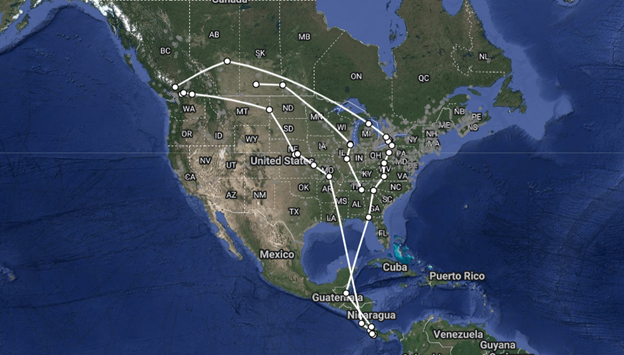
The new tower at Chicago Botanic Garden recently detected a Sharp-shinned Hawk, which was originally tagged at Amsterdam Dunes Preservation Area in Wisconsin, on October 19, before passing through Chicago on October 23. It was redetected in Kalamazoo, Michigan on October 26. Our smallest bird-hunting Accipiter hawk, Sharp-shinned Hawks migrate through the Great Lakes region in peak numbers each October.
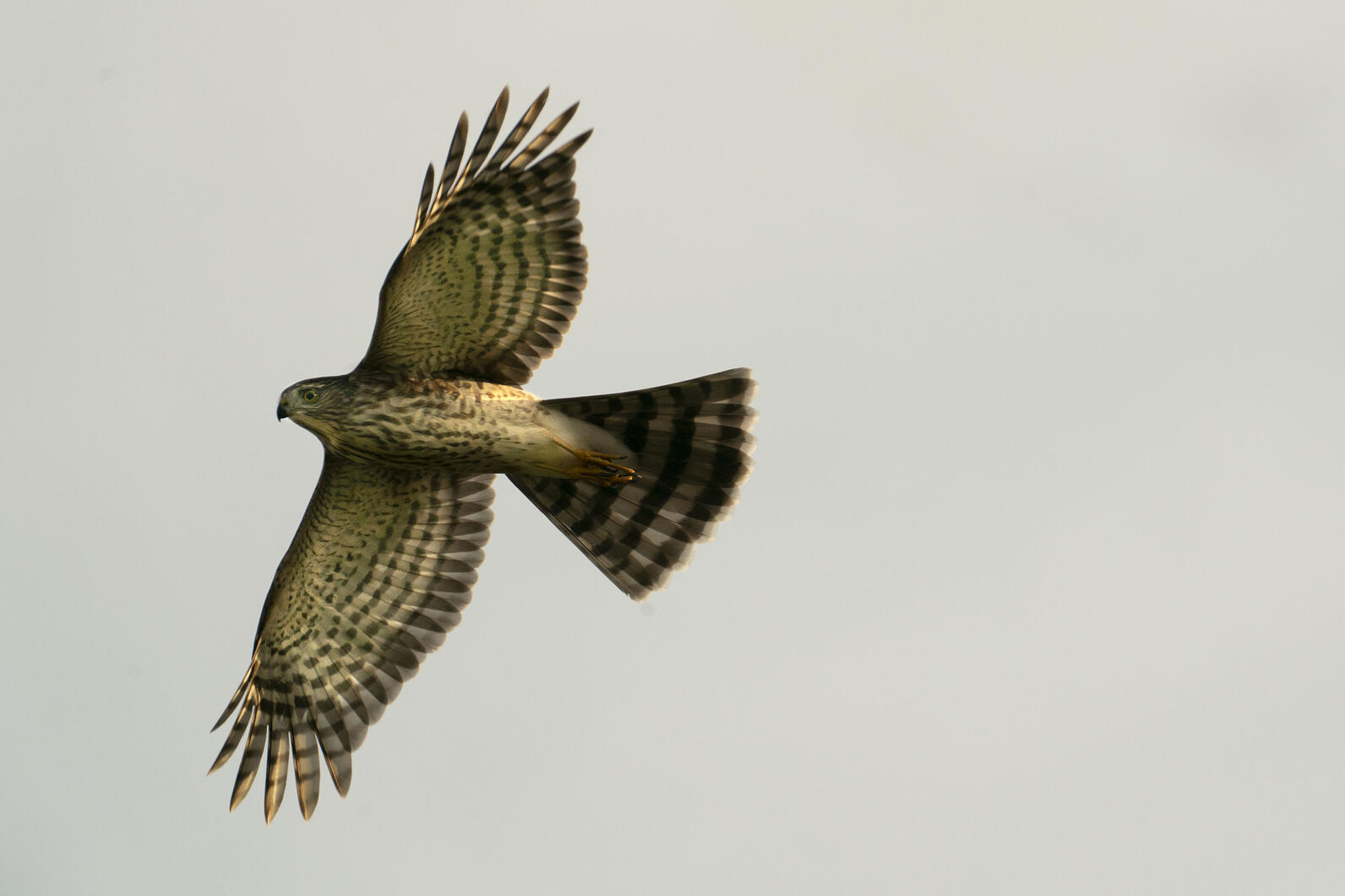
The Chicago Botanic Garden Motus tower also detected a Stilt Sandpiper, Common Nighthawk, Swainson’s Thrush, and White-throated Sparrow in 2023, for a total of four detections from four research projects. The tagged Common Nighthawk that passed through Chicago was part of a project focused on birds of the intermountain western U.S. and was originally tagged in Montana!
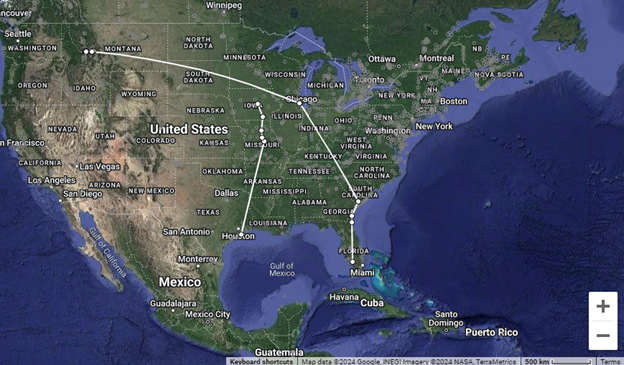
Understanding the Needs of Ohio’s Birds
Grange Insurance Audubon Center’s tower in Columbus, Ohio lies within the Mississippi migratory flyway. Researchers from The Ohio State University tagged White-throated Sparrows at Grange Insurance Audubon Center during the 2024 spring season as part of their ongoing research on the lake crossing behavior of small migratory birds. Specifically, Tonra is using Motus to evaluate the potential impact of offshore wind energy on small migratory bird movements across Lake Erie. One of the tagged White-throated Sparrows was detected at the Nature Center for two days before departing Columbus and being detected in Cleveland over a week later!
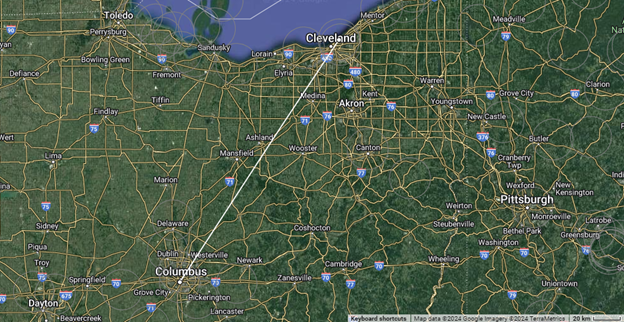
Tracking some of Michigan’s most vulnerable species
Three Motus radio towers were strategically installed in 2020-21 along the coast of southeast Michigan as part of an Audubon Great Lakes study investigating survival and migration of Black Tern chicks. This study has since ended, but our towers continue to pick up detections of other birds flying through the area.
Most notably, the Motus tower at Wigwam Bay State Wildlife Area, in Standish, Michigan, has detected 13 formerly federally endangered, now state-threatened, Kirtland’s Warblers, as well as state-threatened Eastern Whip-poor-wills. In total, this tower has detected 26 individual birds from 8 research projects.
The Kirtland’s Warblers detected at Wigwam Bay were part of several studies coordinated by the Smithsonian Institute and their partners that have since been published on migratory bird departure (Cooper et al 2023, Cooper et al 2023), unexpected movements of Kirtland's Warblers during the breeding season (Cooper and Marra 2020), and linking winter habitat conditions to Kirtland’s Warbler migration survival (Cooper et al 2024). An ongoing study aims to measure the survival rates of Kirtland's Warbler adults and fledglings after leaving the nest and before departing from the breeding grounds for fall migration. Since Kirtland’s Warblers molt their feathers during the fall, they could potentially be more vulnerable during this time of year, thus decreasing their chances of survival.
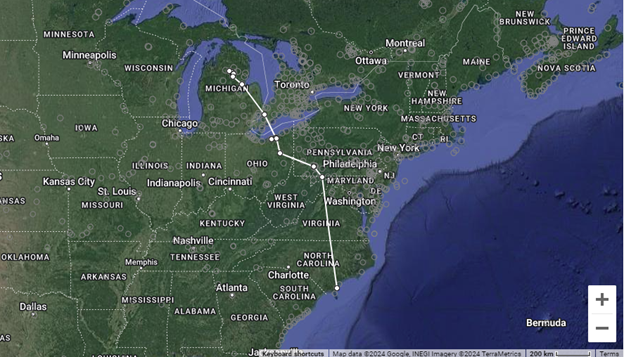
The Water Plant tower in the City of New Baltimore, Michigan has detected federally threatened Rufa Red Knots, state-threatened Eastern Whip-poor wills, Black Terns, and a Common Nighthawk, among other migratory bird species for a total of 13 detections from 6 research projects. The Black Tern fledgling that we photographed at it's nesting location at St. Clair Flats State Wildlife Area, Michigan in June of 2021 (below), was re-detected at the City of New Baltimore, Michigan on July 30, 2021 and in South Carolina on August 18.
The Lake St. Clair Metroparks tower in Harrison Township, Michigan also detected Rufa Red Knots, three Kirtland’s Warblers, a Common Nighthawk and Eastern Whip-poor-will, among many other migratory landbirds between 2021 and 2023, for a total of 47 detections from 14 research projects.
Most of the tagged Common Nighthawks and Eastern Whip-poor-wills that were detected at our Great Lakes Motus towers were part of a study out of the University of Guelph in Ontario, Canada. Their study objectives were to 1) gain knowledge of territory size and movements of these two species on their breeding grounds, 2) measure nestling survival through the post-fledging period, and 3) collect data on potential threats to these species (high-speed roadways) with the hope of developing informed conservation management strategies.
Red Knots are famous for their long migratory journeys, which can total 20,000 miles each year! The federally threatened Rufa Red Knots we detected in Michigan were tagged by the U.S. Fish and Wildlife Service and partners in South Carolina during spring migration to evaluate their use of the Atlantic migratory flyway versus the inland Great Lakes Mississippi flyway. Most of the tagged birds traveled north through the eastern Great Lakes Basin, some through Michigan, without stopping, making the southeastern U.S. the last critical stopover site for some knots to rest and refuel before reaching their boreal or Arctic stopover sites.
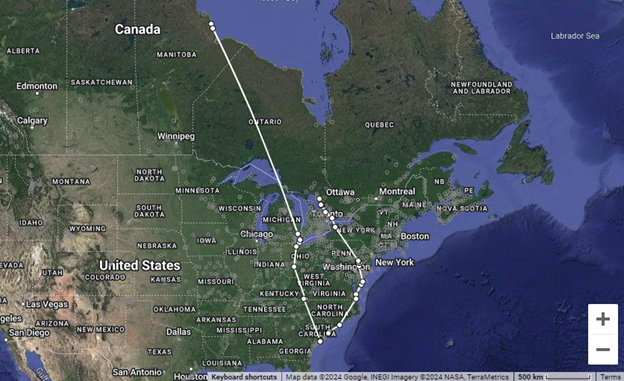
Each season brings with it new bird species detections and I can’t wait for our next round of Motus tower checks to see which tagged birds our towers detect next!










